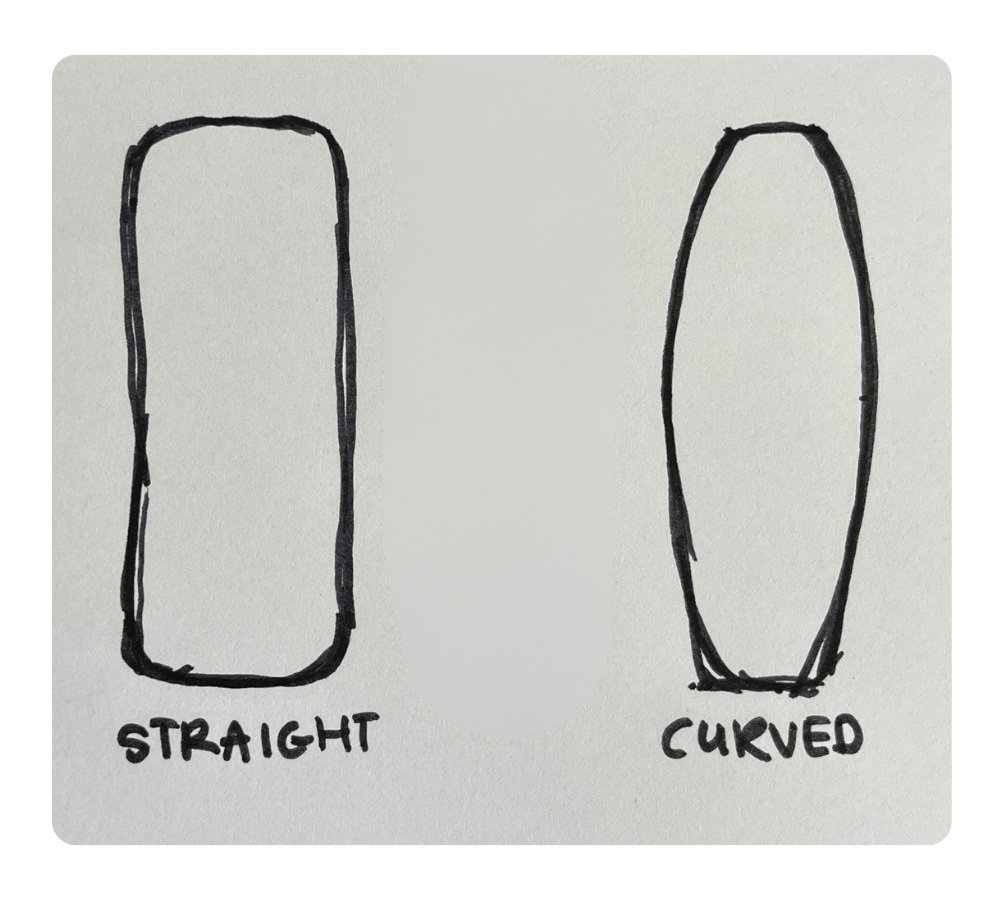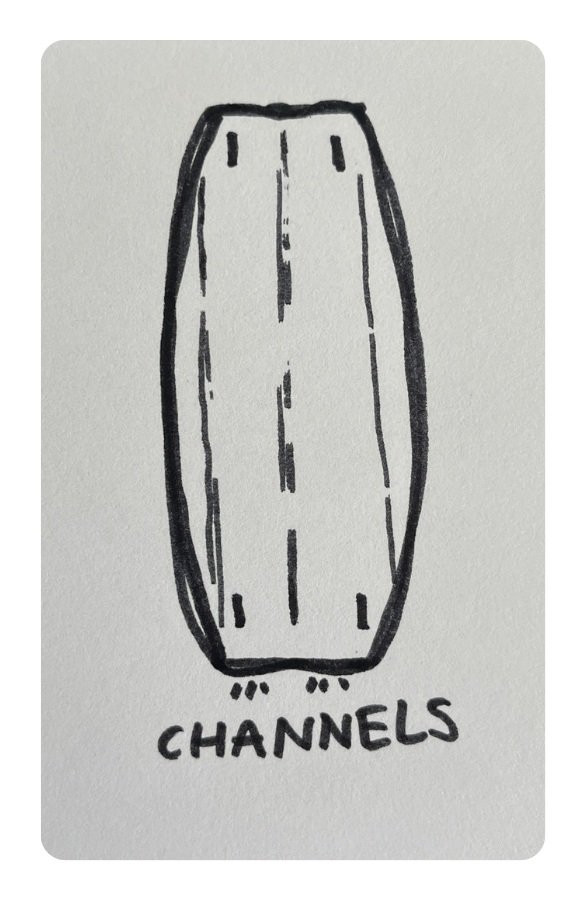Right board, right vibes: twintip guide
You’re on the beach, staring at a wall of twintips, trying to figure out which one will make you a kiteboarding legend (or at least keep you from faceplanting). Too small, and you’ll sink faster than your confidence after a failed kiteloop. Too big, and you're dragging around something that feels more like furniture than gear
Choosing the right board isn’t just about looks, it’s about progression, comfort, and maximizing the stoke. The right twintip helps you ride longer, progress faster, and feel at home on the water. The wrong one? Let’s not go there.
Let’s break down what makes a twintip your twintip.
Why twintips rule the water
Twintips are the golden retrievers of the kite world, loyal, versatile, and stoked to ride in either direction. Their symmetrical shape means you can ride switch, land tricks without thinking about which foot’s forward, and learn fast without technical gear slowing you down.
Whether you’re just starting or sending megaloops, twintips adapt to you. That’s why 90% of kiters ride them.
Size matters: Finding your twintip sweet spot
Board size influences everything from how easily you get going, to how stable or agile your rides feel. Most riders fall in the 134–145 cm range, but your ideal board depends on three key factors:
Rider weight and height: Use this table as a starting point (see below).
Skill level: Beginners benefit from larger boards; advanced riders often downsize for control and pop.
Conditions and riding goals: Want light‑wind sessions? Go a bit bigger. Love high‑wind freestyle? Go smaller and more responsive.
What makes a twintip tick: Design features
Rocker
Rocker refers to the longitudinal curve of the board when viewed from the side. It plays a huge role in how your board rides through chop, planes, and lands.
Continuous Rocker: This has a smooth, constant curve from tip to tip. It delivers a predictable ride, handles choppy water well, and offers consistent grip. Perfect for freeride and general use.
Three-Stage Rocker: Flat in the middle with more pronounced curves at the tips. This creates explosive pop and better separation from the water — great for freestyle tricks and wakestyle. However, it can feel slower and harsher on landings.
Low/Flat Rocker: The board sits flatter on the water, offering fast speeds and early planing, especially in light wind. Ideal for beginners or light-wind days, but can feel less forgiving in chop.
Medium Rocker: A versatile option that balances pop, comfort, and upwind ability. Great all-rounder for riders who want a board that works in most conditions.
High Rocker: Features aggressive curvature for smooth landings and control during powered tricks. Best for wake-style and powered freestyle in strong wind, but requires more kite power to plane.
Outline
The outline of a board, or how curvy or straight the rails are, affects how the board turns and tracks upwind.
Straight Outline: These boards have more effective edge length in the water. That means better upwind angles and more pop for jumping, but turning can feel stiff. Perfect for freeriders and freestylers who value edging power.
Curved/Rounded Outline: A more rounded shape makes carving smooth and flowing. This makes the board playful and fun, especially for turns and transitions. Great for beginners or riders who want a cruisy, carve-friendly ride.
Tip shape
The shape of your board’s tips influences how it handles water spray, landings, and pop.
Square Tips: Offer stronger edging and more aggressive pop. They’re often found on freestyle boards for maximum lift and control. They also help with early planing.
Rounded Tips: Softer landings, better carving, and a smoother feel in chop. Perfect for freeriders or anyone prioritizing comfort and flow.
Width
Width determines how quickly your board planes and how easily it turns. It is the rail to rail dimension.
Wider Boards (39–42 cm): Provide more surface area, which means better light-wind performance and easier planing. Ideal for beginners, heavier riders, or anyone kiting in low-wind conditions.
Narrower Boards (36–39 cm): These are faster edge-to-edge and offer more control at higher speeds. They’re ideal for smaller riders or advanced kiters in strong wind.
Flex
Flex affects comfort, control, and performance. It varies across the board and even along different zones.
Soft Flex: Absorbs chop and offers forgiving landings. Great for beginners, lighter riders, or anyone riding in rough conditions.
Stiff Flex: Transfers energy more directly, resulting in explosive pop and fast response. Ideal for freestylers or heavier riders who want max performance.
Progressive Flex: Combines a stiffer center with softer tips for comfort during landings and solid control on takeoff. A perfect balance for all-round riders.
Channels
Channels are the ridges that are shaped into the base of the twintip. They improve water flow, grip, and directional control.
Why it matters: Channels help lock in your edge while riding, especially when carving upwind or loading for a jump. Boards with deeper, more aggressive channels offer more grip and stability, which is great for freestylers, big air riders, or anyone riding in choppier conditions. Beginners benefit from channels too, as they help prevent side slipping and improve control.
Some boards feature multiple channels or edge channels paired with central spine channels. If you want a finless feel, channels are your friend.
Concave
Concave is the subtle curvature that are sculpted features on the bottom and top of the board. Instead of being flat, many boards have a spoon-like shape that enhances performance.
Single Concave: The most common shape, it improves planing and adds lift. It also softens landings and increases grip, great for freeriders and all-round performance.
Double Concave or V-Shape: Provides even more grip and a softer, more cushioned ride. This setup helps channel water through the middle of the board for added speed and control, perfect for aggressive freestyle or powered up sessions.
More concave generally means better comfort, pop, and stability, especially helpful in chop or when landing tricks.
Construction considerations
Most twintips are built around a wood core, usually paulownia or poplar, because it offers a great balance of flex, strength, and weight. Wood delivers a lively, natural ride that responds well to your movements. Foam-core boards, on the other hand, are lighter and highly durable but often feel a bit stiffer and less responsive. They’re sometimes used in budget or school boards because of their resilience.
High-performance boards often include carbon or hybrid layers. Carbon adds stiffness and reduces weight, giving you more pop and precision. It also makes the board pricier and sometimes more brittle in impacts. Many modern boards use carbon stringers or reinforcements to blend the benefits of wood and carbon.
Brand differences
Each manufacturer brings unique philosophies to twintip design. Some prioritize comfort and accessibility, others focus on performance and progression. Understanding these differences helps narrow your choices and find boards that match your riding personality.
Don't get caught up in brand loyalty, the best board is the one that suits your specific needs and local conditions. Demo different brands when possible, and remember that expensive doesn't always mean better for your particular situation.
Care & longevity
A quality twintip should provide years of reliable service with proper care, mine is already 5 years old and still thriving. Rinse with fresh water after sessions, store in moderate temperatures, and address dings fast to prevent water damage. Quality boards maintain their performance characteristics for surprisingly long periods.
Consider your board an investment in your progression and enjoyment. A well-chosen twintip will support your development from cautious beginner to confident intermediate and beyond. The right board grows with you, adapting to your evolving skills and ambitions.
Making the final call
It’s tempting to buy the same board your kite hero uses, but if you’re just starting out, that’ll make learning harder (and more expensive). Beginners should look for medium to larger-sized boards with soft to medium flex, rounded outlines, and subtle channels. These boards offer early planing, easy upwind performance, and a smooth ride in chop.
Intermediate riders can start exploring more specific shapes depending on style, freeride, big air, or freestyle. You’ll want more pop, grip, or agility without sacrificing comfort. As you become advanced, it’s worth testing boards with stiffer cores, deeper channels, and aggressive outlines tailored to your trick preferences.
The key: match the board to your current level, not your future Instagram self. You’ll progress faster, fall less, and have more fun.
Now get out there and find your floating soulmate, just remember to bring sunscreen, because you're going to be spending a lot more time on the water than in it!
xox Berito








